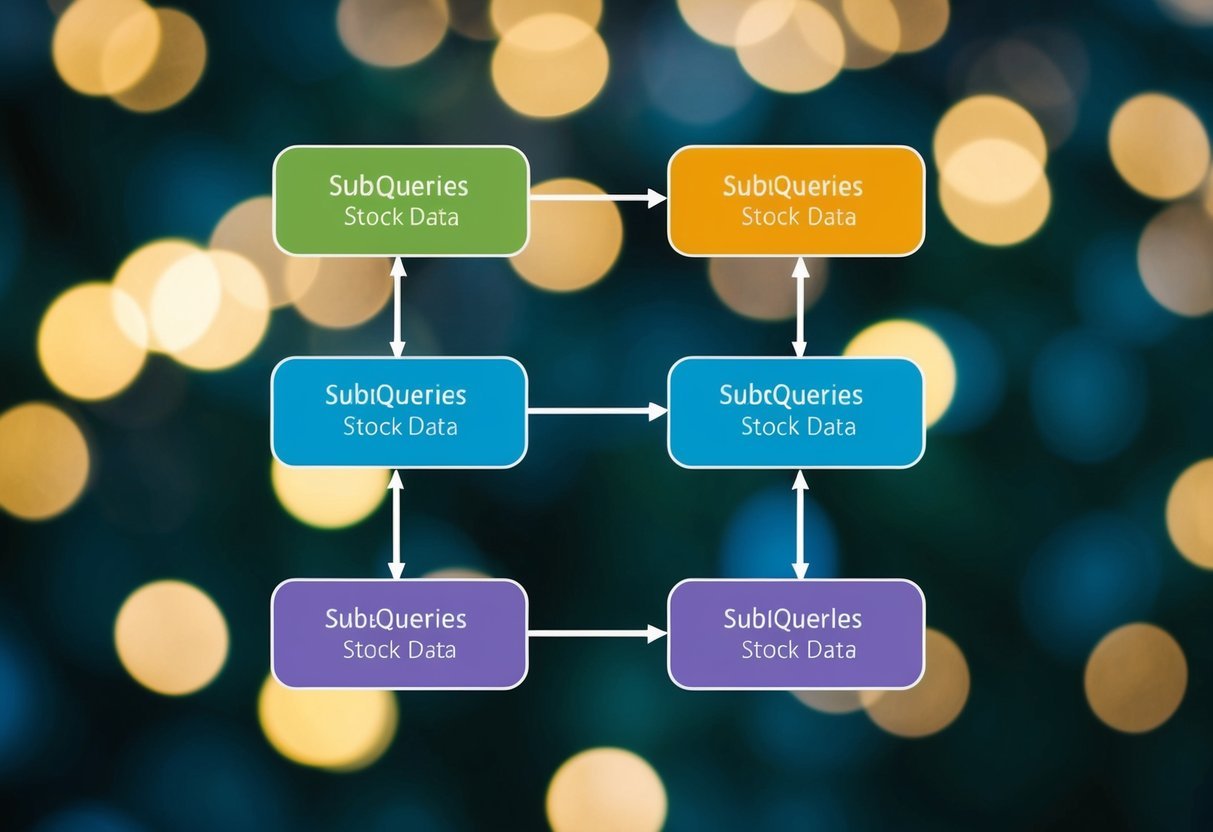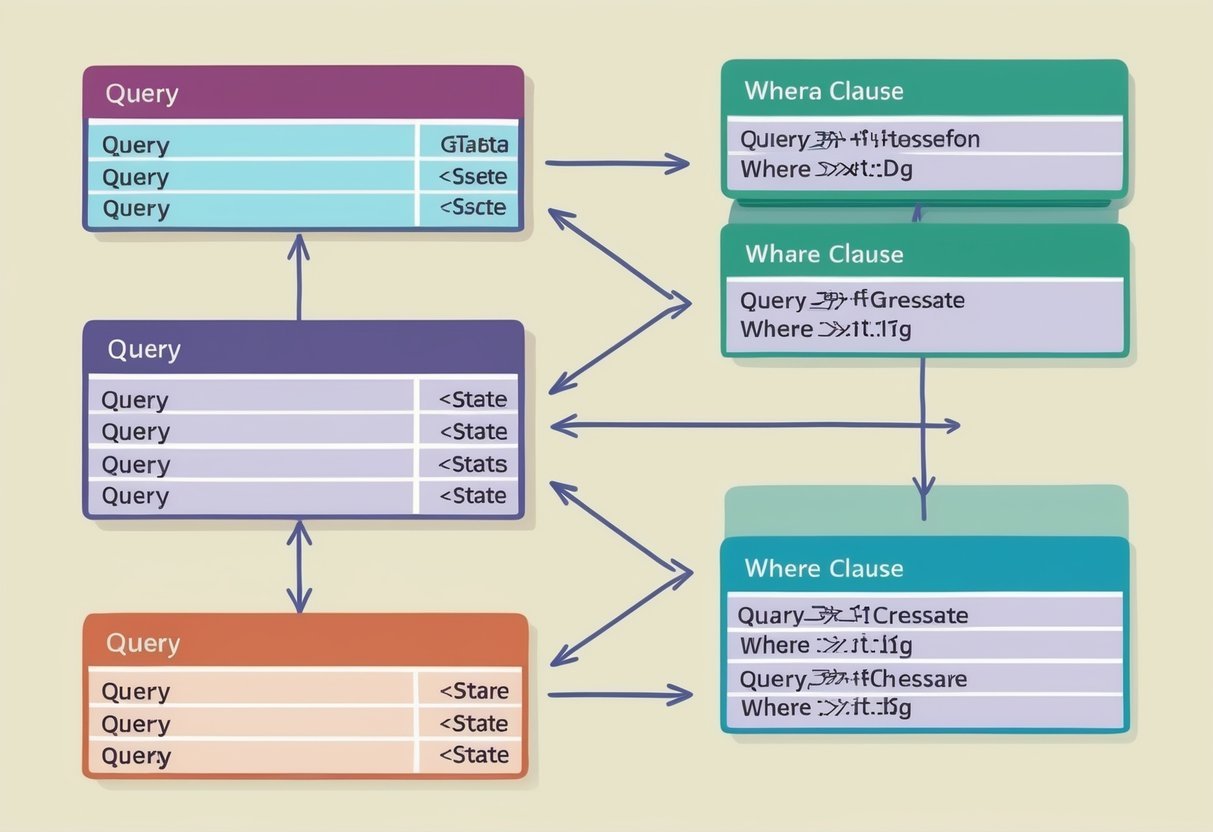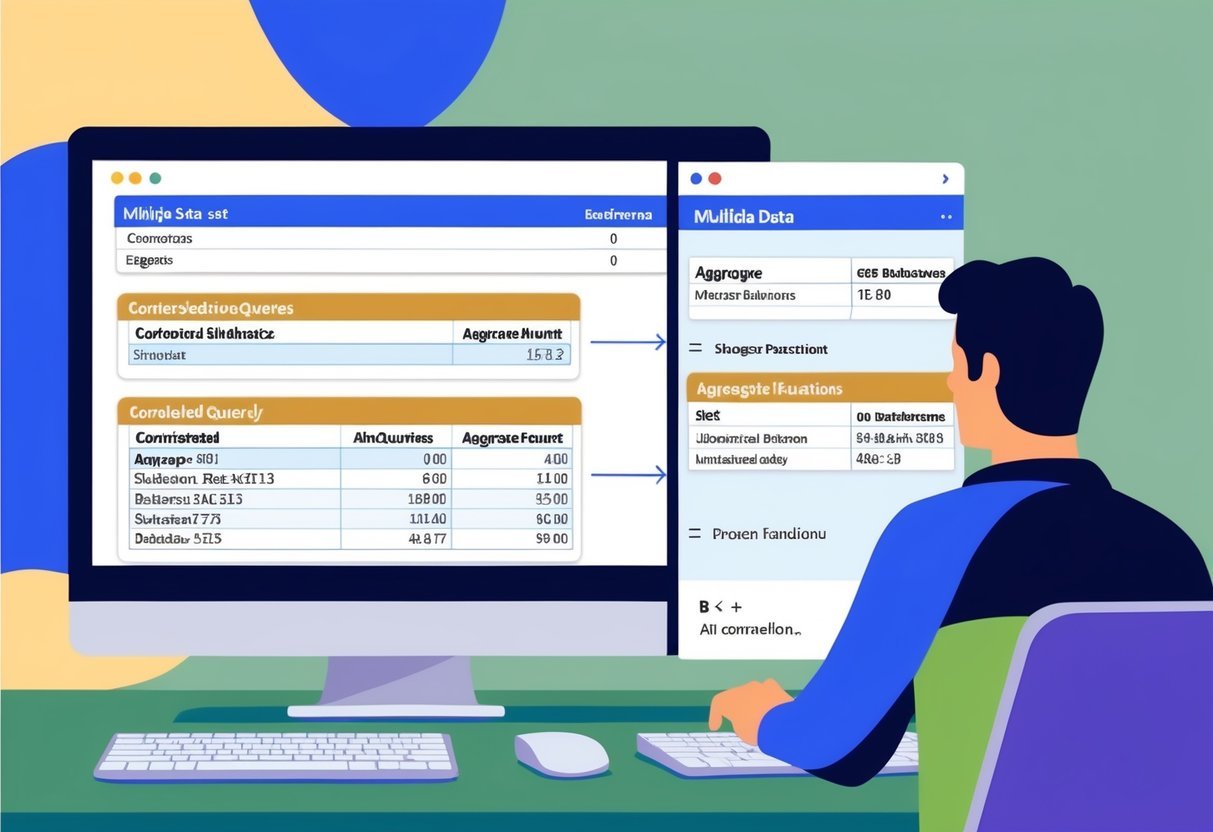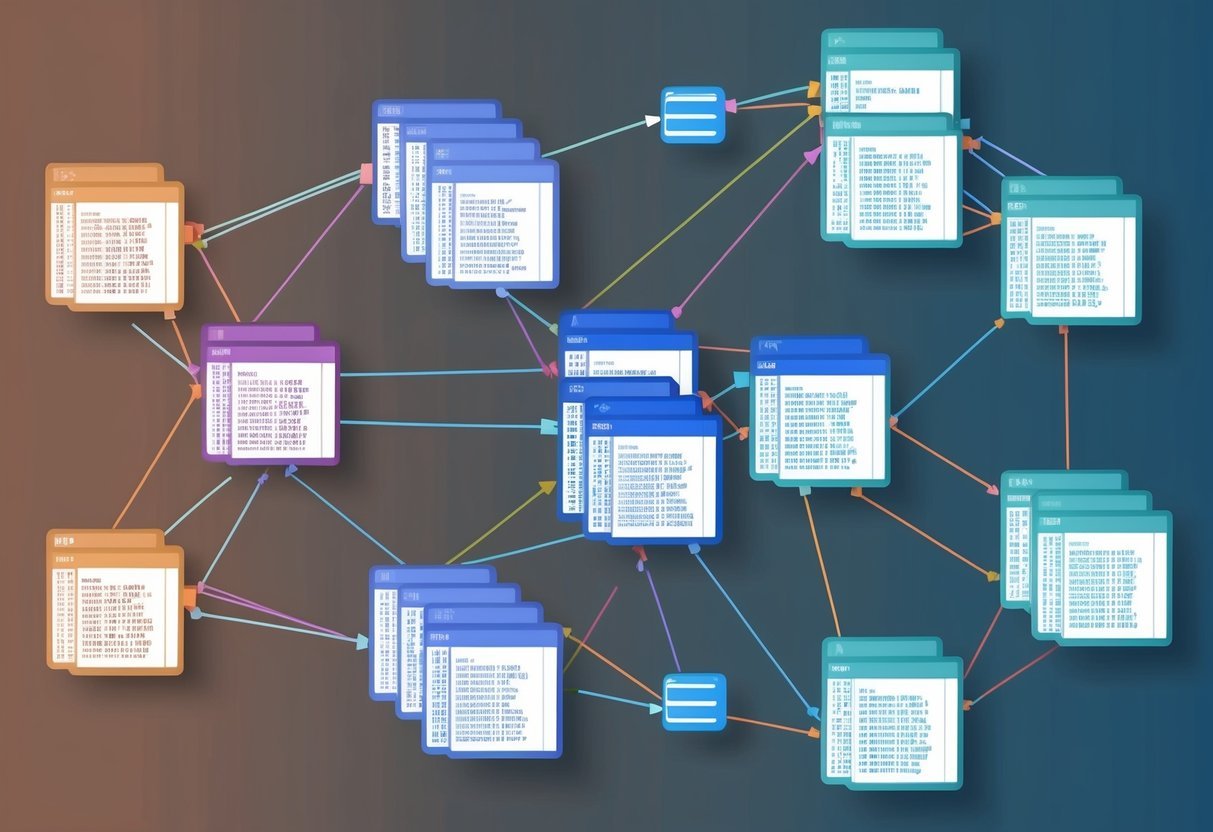Comparing SQL Server Management Tools
When it comes to SQL Server management tools, three popular options are SQL Server Management Studio (SSMS), Azure Data Studio (ADS), and Visual Studio Code (VS Code).
SSMS is a comprehensive tool for managing different components of SQL Server. It offers advanced features for database administration.
Users who need detailed management capabilities often prefer SSMS.
Azure Data Studio is ideal for those who work across platforms. This tool is free and open-source.
It’s often favored by developers who need a modern, customizable interface. The tool supports SQL Server and Azure SQL Database.
Visual Studio Code caters to those who favor a lightweight application. Although primarily a code editor, it supports SQL queries through extensions.
This makes it flexible for users who work with multiple programming languages.
Let’s compare some features in a simple table:
| Feature | SSMS | Azure Data Studio | VS Code |
|---|---|---|---|
| Platform Support | Windows | Cross-platform | Cross-platform |
| IntelliSense | Basic | Advanced | Via extensions |
| Extensions and Add-ons | Limited | Extensive | Extensive |
| Administration Tools | Advanced | Basic | Basic |
This comparison shows how different tools cater to varied needs in SQL Server management. Each tool has its strengths, and the best choice often depends on the specific requirements of the user.
Supported Operating Systems

SQL Server Management Studio (SSMS), Azure Data Studio, and Visual Studio Code have different compatibility with operating systems. Understanding these differences can help users choose the right tool for their needs.
Windows Compatibility
SSMS is primarily designed for Windows. It’s a tool many database administrators rely on, but it does not support other operating systems like Linux or macOS. This limits its use for those who work across different systems.
Azure Data Studio and Visual Studio Code, however, both support Windows. They provide a flexible environment for users who prefer using Windows but need a tool that can also support other platforms.
For users solely on Windows, any of these options would work, though their additional features should be considered based on user needs.
Linux and MacOS Support
For users on non-Windows platforms such as Linux and macOS, Azure Data Studio and Visual Studio Code offer strong compatibility.
Azure Data Studio is notable for its cross-platform support, making it a preferred choice for developers needing flexibility in operating systems. It allows users to have a consistent experience across different machines.
Visual Studio Code, a favored tool among programmers, also works well on Linux and macOS. Its open-source nature and wide range of extensions increase its adaptability.
SSMS falls short here, restricting use to Windows, which can be a decisive factor for professionals who need a cross-platform solution. For more on this, visit how Azure Data Studio is supported on various platforms.
User Interface and Experience
Choosing the right SQL management tool often depends on the user interface and overall experience. Azure Data Studio, SSMS, and VS Code each offer unique features in terms of design, accessibility, and customization.
Graphical Interface Design
Azure Data Studio is designed with a modern and streamlined interface, which includes a dashboard that offers widgets for quick insights and reports.
It draws from Microsoft’s Visual Studio Code, providing a familiar environment for those acquainted with this editor. Dark mode is a popular feature and is easily enabled, enhancing readability and reducing eye strain.
By contrast, SSMS adopts a more traditional layout, which appeals to seasoned SQL professionals accustomed to a classic look and feel. Meanwhile, VS Code is robust with extensions, supporting a wide range of programming tasks beyond SQL.
Accessibility Features
Accessibility in these tools plays a key role, especially for developers who require specific accommodations.
Azure Data Studio shines with its native cross-platform compatibility, allowing use on Windows, macOS, and Linux. It integrates tools that aid in collaborative editing, making it suitable for diverse teams.
SSMS, while more traditional, excels with its comprehensive database management capabilities, though it primarily runs on Windows.
VS Code is noted for its extensibility and offers many plugins that enhance accessibility, catering to developers with different needs and preferences.
Customization Options
Azure Data Studio offers significant customization opportunities with a wide array of extensions and themes available, providing flexibility to tailor the workspace. It supports Markdown and Jupyter notebooks, offering users diverse ways to document and present data.
SSMS focuses more on in-depth administrative functions rather than customization; it has fewer options but remains highly effective for managing SQL Server environments.
VS Code stands out in customization, with thousands of extensions and themes, allowing users to configure almost every aspect of their interface to optimize productivity and functionality.
Development and Administration Features
SQL Server Management Studio (SSMS), Azure Data Studio, and Visual Studio Code (VS Code) each offer distinct features valuable for database development and management. Whether focusing on coding efficiency or robust database administration, these tools cater to different requirements for developers and database administrators (DBAs).
Advanced Database Development
SSMS is known for its powerful query editor, enabling developers to write and test complex SQL queries. With its integrated graphical tools, it suits those who prefer a traditional IDE for database development.
The Object Explorer in SSMS provides an organized view of database objects, making navigation intuitive for developers working on large databases.
Azure Data Studio is ideal for those seeking a cross-platform tool. Its modern interface supports a more streamlined development experience.
With built-in Git integration and the integrated terminal, developers can manage version control directly within the tool. This setup fosters seamless collaboration and simplifies the development workflow, especially for those incorporating continuous integration practices.
VS Code offers flexible extensions for SQL development. While not specifically a database management tool, its comprehensive extension library allows developers to customize their workspace for SQL needs. This flexibility benefits developers who juggle multiple programming environments or prefer lightweight setups.
Efficient Data Management
Azure Data Studio excels in data management with its lightweight structure and innovative features. It supports connectivity to various databases, both cloud and on-premises, facilitating scripting and data file manipulation. The user-friendly dashboards and customizable insights allow developers to efficiently track performance metrics.
In SSMS, data management is robust, offering extensive tools for import/export operations. The Query Editor is complemented by multiple built-in templates and code snippets, helping create standardized queries quickly. This feature-set appeals to enterprises needing structured data management protocols.
VS Code also supports data management through extensions, providing basic query running capabilities. This environment suits those who want to handle SQL tasks without using a dedicated database manager, merging development and simple data management in one tool.
Database Administration and Maintenance
SSMS stands out with its comprehensive suite for database administration. Features like backup and restore operations, detailed performance tuning aids, and security management options are vital for DBAs.
Its capacity to handle advanced database administration tasks makes it a preferred choice for those responsible for maintaining database health and reliability.
For Azure Data Studio, the focus is on flexibility and modern needs. It offers decent database administration capabilities, though it may lack some advanced functionalities found in SSMS. The extensions available for Azure Data Studio enhance its base features, particularly for developers focused on modern deployment models.
VS Code, while not primarily a tool for database administration, offers essential functionalities through extensions that allow users to perform maintenance tasks on databases. Its adaptability means users can tailor it to meet basic administrative needs, useful for lightweight or non-enterprise scenarios where database upkeep is necessary.
Extensibility and Integration

Each tool—SSMS, Azure Data Studio, and VS Code—has its own approach to enhancing usability through extensibility and integration features. They allow users to customize their environment with extensions and plugins, support version control, and offer compatibility with various programming languages, enhancing their utility and flexibility.
Adding and Managing Extensions
Azure Data Studio and VS Code both stand out for their ability to add and manage extensions. Users can browse and install a vast library of extensions to tailor these tools to specific needs, such as integrating Jupyter Notebooks or additional SQL Server management functions.
With VS Code, the process is incredibly straightforward, and users have access to a wide array of plugins. This makes it adaptable for different tasks such as managing databases or working with various programming environments.
SSMS, on the other hand, is more limited in this aspect. It does not offer the same level of extensibility through third-party plugins, focusing instead on providing a comprehensive set of built-in features tailored for SQL Server administration.
Version Control Integration
Both Azure Data Studio and VS Code provide robust version control integration, crucial for managing code changes and collaboration.
Azure Data Studio integrates source control effectively, offering a modern editing experience with its source control integration.
VS Code excels with its seamless integration with Git, allowing users to commit, push, and track code changes without leaving the editor. This makes it an ideal choice for development teams who require frequent code updates and collaboration.
SSMS lacks built-in source control features, which may necessitate external tools for version management. Users working primarily with databases may find this sufficient, but developers frequently collaborating on code projects might prefer the integrated approach of Azure Data Studio or VS Code.
Support for Programming Languages
Regarding programming languages, VS Code is exceptionally versatile, supporting numerous languages like Python and Scala. Its open-source nature ensures that language support continues to grow through community and official extensions.
Azure Data Studio also supports various languages and can be extended to work with languages like Python, especially useful for data science applications through its integration with Jupyter Notebooks.
SSMS, while primarily focused on SQL, offers some scripting capabilities. However, it doesn’t support the variety of programming languages found in VS Code or Azure Data Studio, making these alternatives preferable for users needing a multi-language environment.
Collaborative and Advanced Features

When comparing SSMS, Azure Data Studio, and Visual Studio Code, it’s important to explore their support for data science, machine learning, security tools, and performance optimization. Each tool offers unique features that enhance teamwork and efficiency for developers and database administrators.
Data Science and Machine Learning Support
Azure Data Studio supports data science and machine learning with Jupyter Notebooks. These interactive notebooks allow users to write and run code, visualize data, and document workflows within a single environment.
This feature is beneficial for those involved in data analysis and machine learning projects. In contrast, SSMS does not natively support Jupyter Notebooks, which can limit collaboration in data science tasks.
Visual Studio Code, while versatile, does not include built-in features for data science but supports extensions that enhance its capabilities.
For users focused on data science, Azure Data Studio’s integration with Jupyter Notebooks provides a more tailored experience. This emphasis on data science makes it a strong choice for teams working on machine learning projects.
High Availability and Security Tools
SSMS excels in providing advanced security and high availability tools essential for enterprise environments. It includes features like Always On for high availability and Always Encrypted for enhanced data security.
These tools help in maintaining data integrity and availability, making SSMS suitable for environments where security and reliability are critical.
Azure Data Studio, while modern and user-friendly, lacks some of these built-in high availability and security features. Users may need to rely on external tools or additional scripts to achieve similar security standards.
Performance Insights and Optimization
Performance monitoring and optimization are crucial, and both SSMS and Azure Data Studio cater to these needs differently.
SSMS provides extensive performance monitoring tools like Performance Insights and SQL Server Reporting Services (SSRS) to analyze and optimize SQL queries effectively. These tools are vital for database administrators who aim to ensure optimal resource usage and database speed.
Azure Data Studio, although lacking some of SSMS’s advanced performance tools, offers extensions and integrations that help in query performance insights. It enables users to optimize their queries and manage database workloads efficiently.
Developers using Visual Studio Code can enhance their experience through extensions, though it demands more manual configuration for performance tasks compared to SSMS.
Frequently Asked Questions

Azure Data Studio, SSMS, and Visual Studio Code are powerful tools for managing SQL databases. Each offers unique features and is suitable for different use cases.
What are the differences between Azure Data Studio and SSMS?
Azure Data Studio is a modern, lightweight tool that supports cross-platform use, making it a good choice for working on macOS or Linux. It is built on top of the Visual Studio Code platform and provides an extensible interface.
In contrast, SSMS offers advanced administrative features, ideal for managing SQL Server environments on Windows.
Is Azure Data Studio compatible with SQL Server Management Studio extensions?
Azure Data Studio does not support SQL Server Management Studio extensions directly. It has its own set of extensions developed for its unique ecosystem. This tool is geared more toward cross-platform versatility and editing, unlike SSMS, which is focused on comprehensive administrative functions.
Can Visual Studio Code be used effectively for SQL database management tasks?
Visual Studio Code, with the right extensions, can be a handy tool for SQL database tasks. It offers a flexible environment where developers can tailor it to their needs, focusing on coding and lightweight editing.
This makes it a popular choice for those who appreciate the extensibility and interface similar to Azure Data Studio.
What are the pros and cons of using Azure Data Studio compared to other database tools?
Azure Data Studio shines with its cross-platform capabilities and modern UI, making it appealing to developers who need a simple, adaptable tool. However, it lacks some advanced features present in SSMS. Developers need to weigh the simplicity and development focus of Azure Data Studio against the comprehensive management features of other tools.
How does performance in Azure Data Studio compare with SSMS for typical database management tasks?
In terms of performance, both tools cater to different aspects of SQL management.
Azure Data Studio is optimized for querying and lightweight tasks, while SSMS is robust, offering deep integration and advanced features for complex database management. Users should consider the nature of their tasks when choosing between these tools.
What features differentiate Visual Studio Code when used with SQL-related extensions from Azure Data Studio?
Visual Studio Code stands out with its flexibility and support for a wide range of extensions, allowing users to configure it according to their specific needs.
In comparison, Azure Data Studio, while also built on Visual Studio Code, is more specialized for database management.
This specialization may limit its use in broader development tasks but makes it a strong option for SQL-focused work.











































